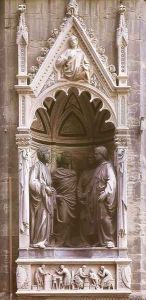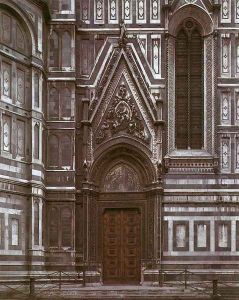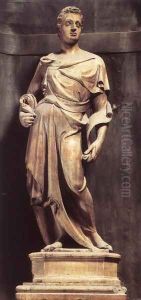Nanni Di Banco Paintings
Nanni di Banco was an Italian sculptor who is considered one of the most significant artists in Florence during the early 15th century. His work is often associated with the early Renaissance period and he was a contemporary of the famous sculptor Donatello. Born around 1384 into a family of stonecutters, Nanni di Banco's artistic talents were apparent from an early age. He became a member of the Arte dei Maestri di Pietra e di Legname, the guild of stonemasons and woodworkers, which was a testament to his skill and craftsmanship.
Nanni's contributions to Renaissance sculpture are noted for their classical influence and humanist themes. He was particularly influenced by the works of ancient Roman sculptors, and this is evident in the dignified and serene figures he created. One of his most famous works is the 'Quattro Santi Coronati' (Four Crowned Saints), a group of sculptures created for the Orsanmichele church in Florence. This work is celebrated for its naturalism and for the way in which the figures interact with each other, which was a departure from the more rigid and isolated figures of Gothic sculpture.
Di Banco's work is characterized by its refined elegance and the use of contrapposto, a technique developed in ancient Greece to depict human figures in a more dynamic way. He was also known for his ability to carve marble with great delicacy, which gave his sculptures a sense of vitality. Despite his talent, there are relatively few works that can be securely attributed to Nanni di Banco, and some of his projects were left unfinished at the time of his death in 1421.
Nanni di Banco's legacy lives on in the art world as an artist who bridged the gap between the Gothic and Renaissance styles. His emphasis on classical forms and humanist content would influence generations of artists to come, including those who would propel the Renaissance to its zenith later in the 15th century. Unfortunately, his life and career were cut short when he died relatively young, but the quality and innovation of his surviving works have cemented his place in the history of art.


